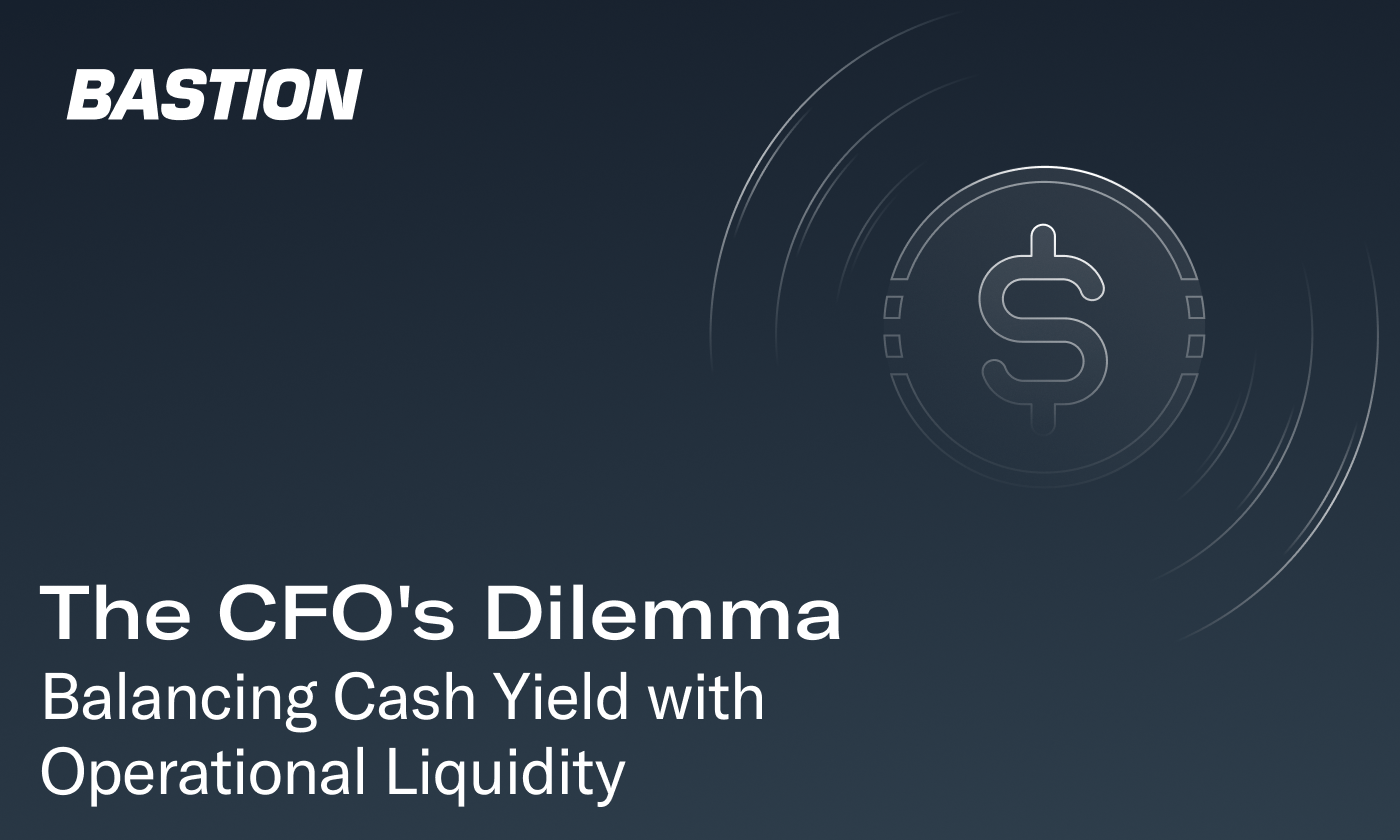
In a world where:
- payment fragmentation costs exist throughout the traditional finance system with
- global cash management costing enterprises millions of dollars in hidden fees,
enterprise treasury teams also face challenges in optimizing yield while maintaining liquidity. It’s an ongoing dilemma.
Allocating funds to higher yield-bearing accounts can increase returns but restrict immediate access, a challenging catch-22 situation. Meanwhile, keeping reserves in low-yield accounts safeguards availability yet sacrifices income. Banks add to this high wire balancing act through minimum balance rules, regulatory buffers, and account structures that lock up millions of dollars.
Enterprises urgently need access to mechanisms for automatic yield capture without undermining liquidity. Here are more specifics about these challenges along with the solution that can allow enterprises to benefit from both yield and liquidity.
How Legacy Financial Systems Trap Cash
After steadily holding for nine months in the 4.25-4.50% range, on September 17, 2025, the Fed announced a rate cut of 25 basis points. This marked the beginning of declining returns for enterprises holding yield-bearing instruments. When coupling that scenario with investment thresholds that require capital reserves, here’s the result: trapped capital with reduced yield.
How Enterprises Get Forced Into Making Treasury Tradeoffs
When treasury teams hold funds in operational accounts to meet ongoing financial needs, the process often requires significant manual effort. Team members must track liquidity demands while also identifying opportunities to move assets into higher-yield instruments. This reliance on manual coordination is inefficient and costly.
Then, when enterprises require funds on short notice (whether anticipatable or not), transferring cash from higher-yield accounts introduces operational risk. Delays accessing these funds can disrupt payments, strain liquidity, and increase the chance of financial shortfalls. This reinforces the CFO’s core dilemma: balancing the pursuit of yield with the need for immediate operational liquidity.
Quantifying the Cost of Idle Cash
Idle balances in non-investable accounts represent tangible opportunity costs, easily captured through yield gap analysis. Even modest yield differentials, when applied to millions of dormant dollars, compound into substantial losses over time. Although not adjusted for inflation, this Board of Governors of the Federal Reserve System data nevertheless demonstrates a startling increase in the amount of liquid assets for nonfinancial corporate businesses that aren’t generating high yield. Measured in millions, in Q4 1945, the report listed an amount of 38,652. In September 2025, that number was 7,916,817.
Global systems like SWIFT—deeply entrenched and long accepted as integrated, unavoidable parts of doing business—have further embedded structural inefficiencies. Yet these inefficiencies need not be treated as permanent features of financial infrastructure.
Reframing the Trade-off: What If Enterprises Could Have Both?
Liquidity as a Strategic Competitive Advantage
Optimal liquidity can provide enterprises with:
- buffers against economic downturns or uncertainty
- safeguards for the company’s creditworthiness
- business reputation protections
- opportunities to capitalize on unexpected opportunities and invest in new initiatives
- the ability to expand geographically into new domestic and global markets
- optimal terms on acquisitions and the best prices from vendors
Yield as a Growth Driving Strategy
In traditional finance, high-yield investments can transform excess liquidity from a passive buffer into an active contributor to growth. Returns from yield-bearing instruments can:
- offset other financial costs
- allow enterprises to make new investments
- fund research, development, and innovation
- finance expansion initiatives: geographically, product-wide, and audience-wise
- enhance enterprise competitiveness
- contribute to a continuous improvement culture
Stablecoins as a Structural Solution
Stablecoin infrastructure challenges the traditional trade-off.. Through programmable money, enterprises can also automate the sweeping of idle balances into tokenized money market funds, capturing yield without sacrificing operational flexibility or requiring time-intensive, costly manual processes.
Funds remain liquid, compliant, and readily accessible while generating continuous returns. This integration not only reduces costs but also positions enterprises for scalable digital transformation.
Solution: Stablecoin Issuance as Yield Infrastructure
At Bastion, we maintain investment strategies with appropriate stablecoin reserves through our regulated Trust (stablecoin issuance pending approval from NYDFS), with principal preservation and liquidity to support timely redemption as the core priorities. With a rock-solid foundation of safeguards (1:1 reserve backing, redemption guarantees, monthly attestations, and strict custody standards), we embrace strict protection of assets.
Then we go beyond that founding principle to facilitate innovation as our technology enables enterprises to embrace the sweet spot of liquidity and yield.
